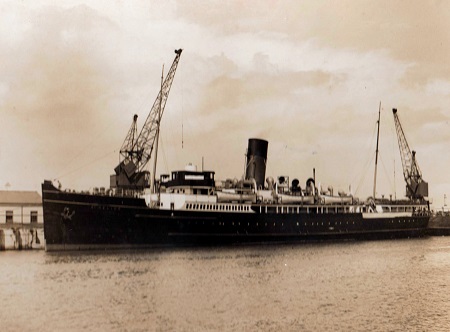Built by John Brown and Company at Clydebank in 1925 for the Great Western Railway Company, in the pre-war years she was predominantly used on the Weymouth – Channel Islands route. During November 1939, she was requisitioned as a troop carrier operating from Southampton. With the developing military crisis in France and Belgium, the vessel made eight round trips to Dunkirk and Calais between the 22nd May and 3rd June, 1940. It has been estimated that she rescued between 5,000-10,000 military personnel and refugees during these operations. The vessel had a rough time at Dunkirk, accidentally ramming and badly damaging HMS Sharpshooter, colliding with the paddle steamer Princess Helena, hitting a submerged wreck and suffering damage from bombs and shellfire.

On the 4th June, she was sent to Southampton for repairs. However, by the 12th June she was back in service and as part of Operation Ariel, the evacuation of the remainder of the BEF from Western France, she made two trips to St Malo and La Pallice.

The top photograph is of the St Helier at Weymouth harbour in GWR livery and is dated in pencil 13th July, 1936.

On the 4th June, she was sent to Southampton for repairs. However, by the 12th June she was back in service and as part of Operation Ariel, the evacuation of the remainder of the BEF from Western France, she made two trips to St Malo and La Pallice.
Commissioned by the Royal Navy in November 1940 as HMS St Helier, in 1944 she took part in the D-Day landings and from July until the end of the war acted as a troopship operating from Southampton, Newhaven and Tilbury to the continent. In May 1945, she was one of the vessels involved in Operation Nestegg, the liberation of the Channel Islands. Returning to civilian service in 1946, she spent the next 14 years back on the Weymouth – Channel Islands route, before being scrapped in 1960.

The top photograph is of the St Helier at Weymouth harbour in GWR livery and is dated in pencil 13th July, 1936.
